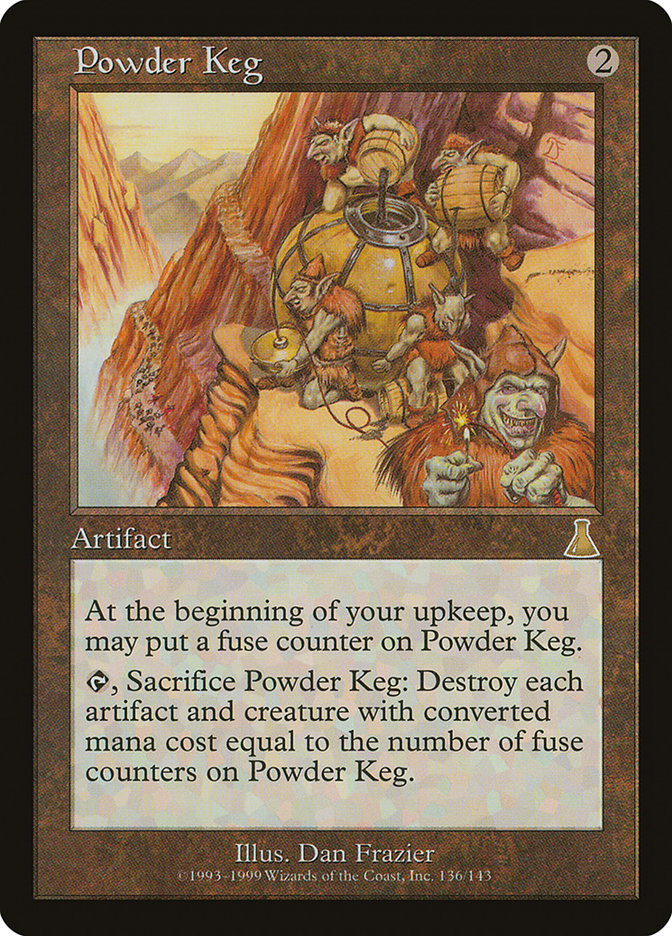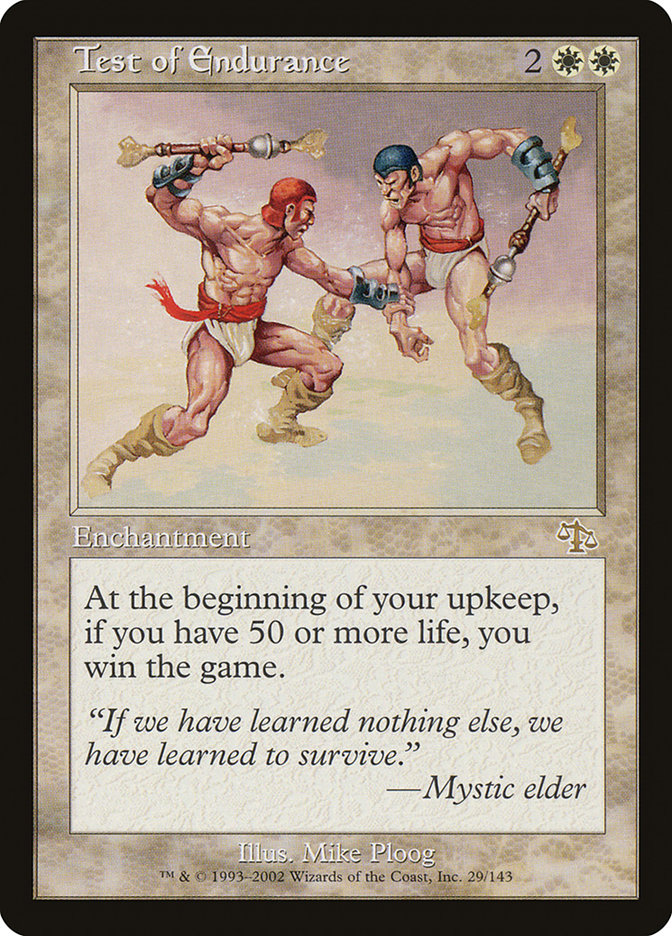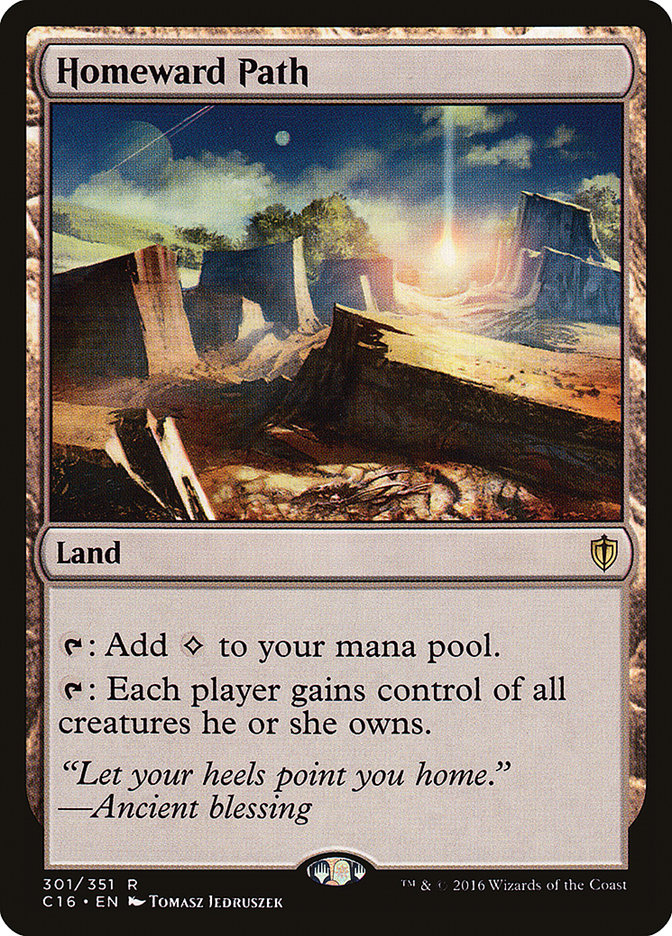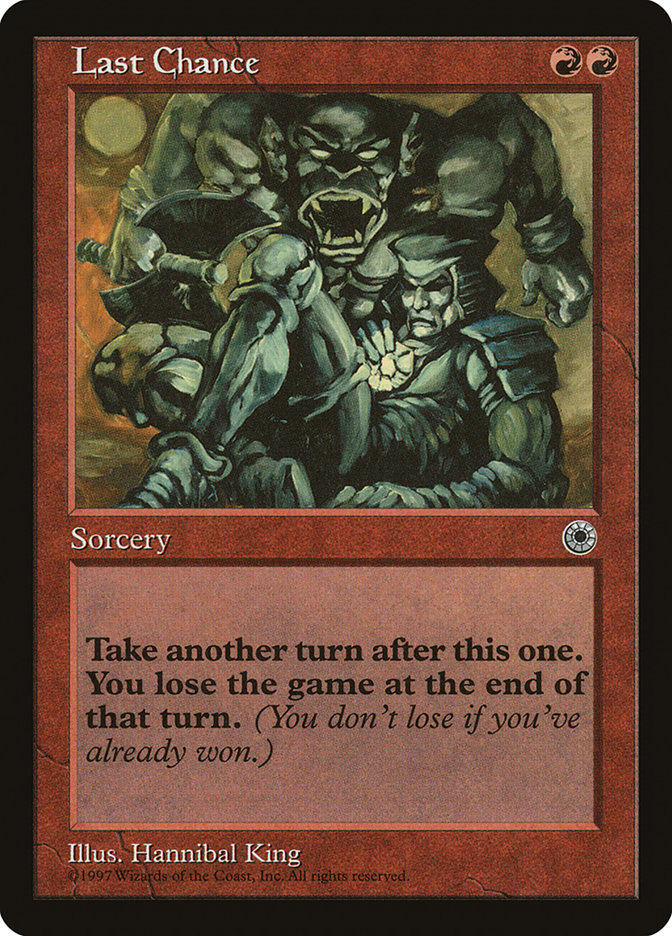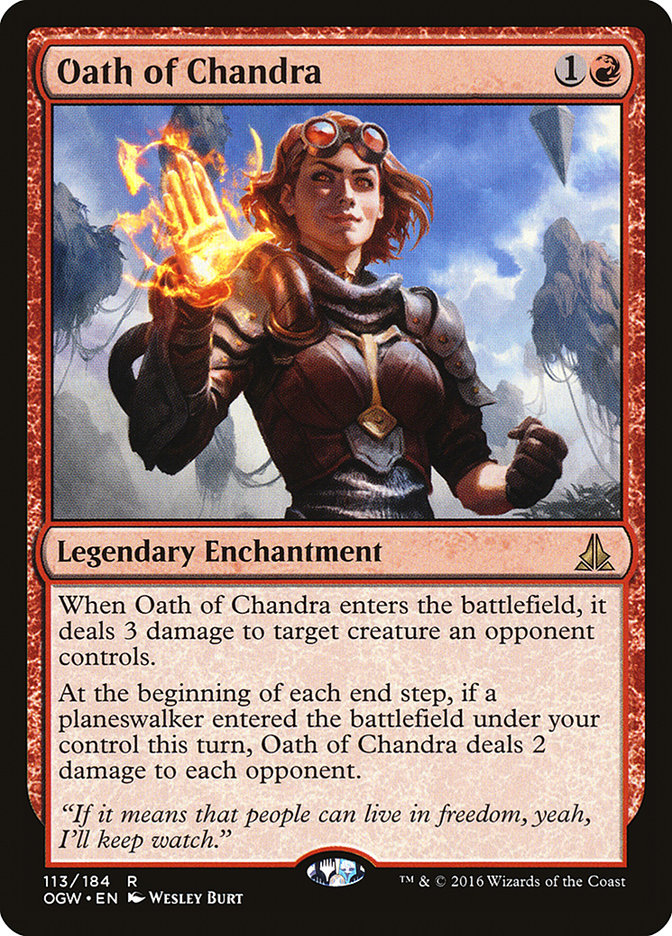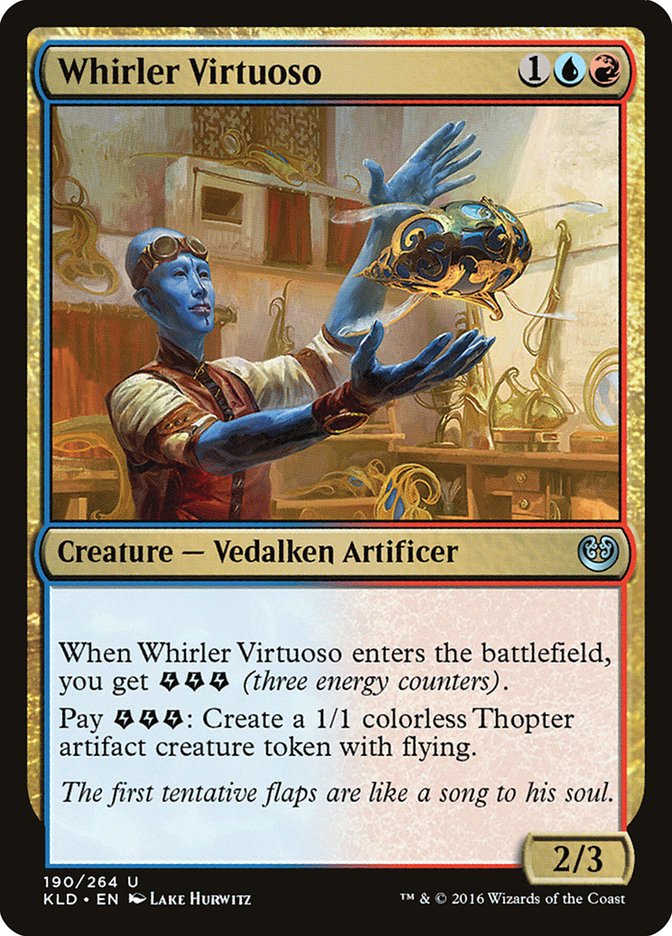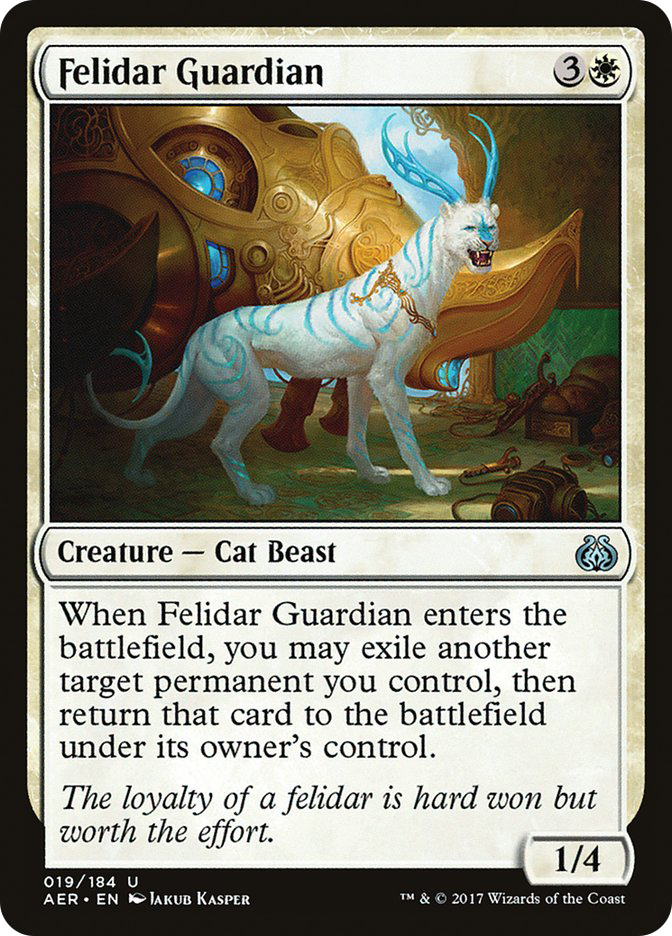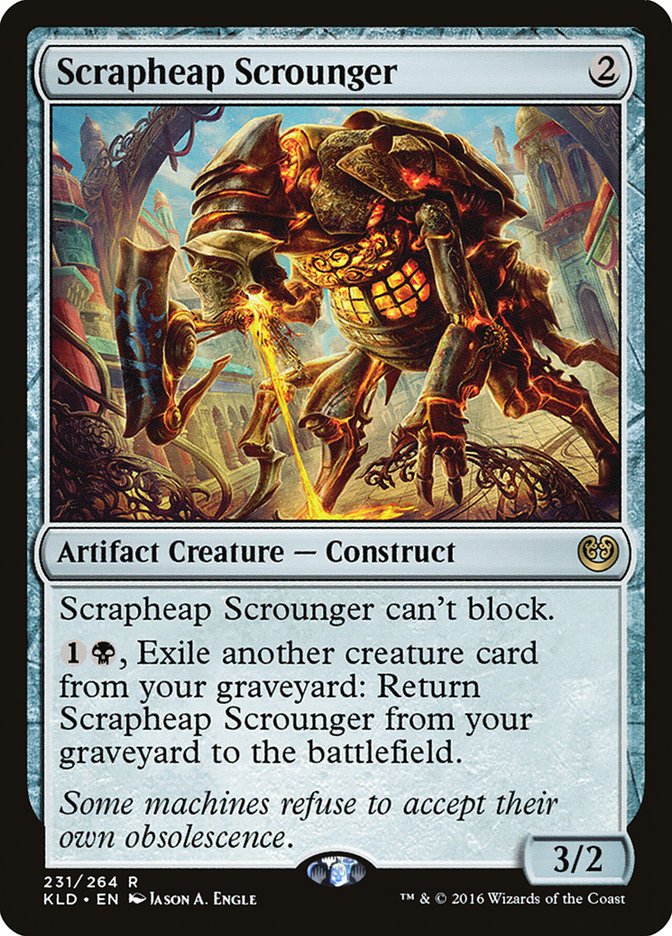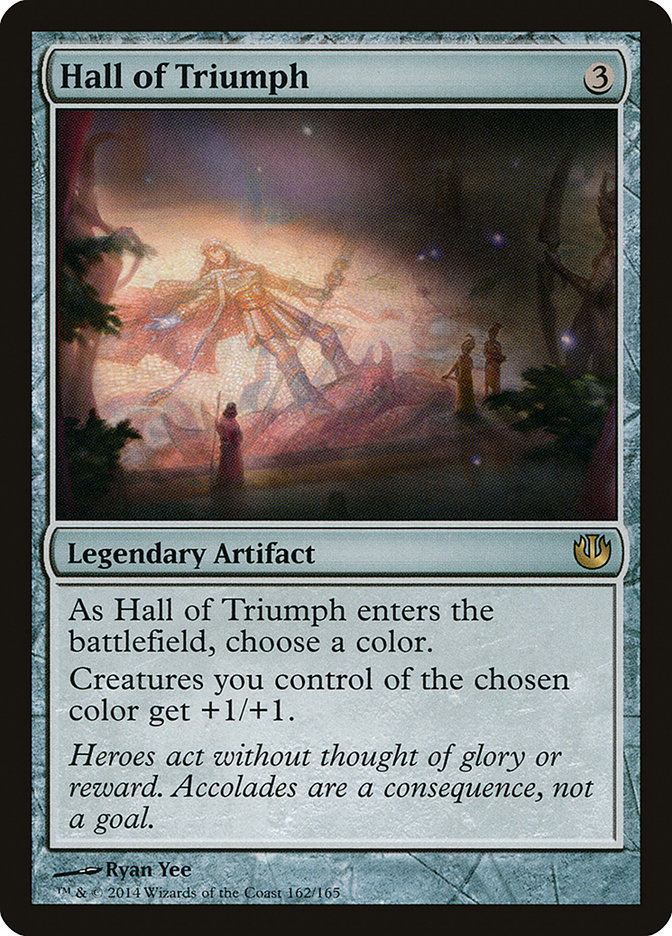There are a lot of things that no one tells you about playing professional Magic. From the outside, it’s easy to focus on the excitement of traveling to all these different places instead of the drudgery of airports and the minor celebration when the convention center has adequate restrooms or a single, reasonably priced, edible item of food.
But those logistical headaches are minor, and you quickly grow accustomed to them and learn to cope or work around them. The biggest change is your perspective on the game. Moving from hobby to profession fundamentally alters its place in your life thus your relationship with it. [Copy Editor’s Note: Yep, I’ve been there.] You lose some control over that relationship when testing and tournaments become obligatory rather than entirely optional. And in a competitive endeavor like Magic, there’s always the feeling that you need to do more, to work harder to stay on top of your game and ahead of everyone else.
That said, the increased pressure that comes with an increased level of commitment would be significantly more manageable if Magic tournaments had clearer feedback. We all know Magic is a game of both skill and variance, and that combination is part of what makes the game great, so by no means am I advocating that the variance is a negative aspect of the game, but that doesn’t mean it’s not frustrating, especially for those of us who have so much invested in it.
It’s common, and good, advice to tell new players not to be too concerned with their results and focus more on evaluating whether they played well or not. All Magic players strive to get better, so that’s of course going to be the best perspective, but it’s a little disingenuous to me. The vast majority of players who are entering tournaments are doing so because they want to do well. They may have different standards for what well is (3-1 at their FNM, winning a PPTQ, qualifying for a Pro Tour, or even winning a Pro Tour), but the commonality is that they’re all invested in their result to some degree. And while it’s unhealthy to be too invested in your result, it’s impossible to turn the dial completely away from it.
So when you go on prolonged losing streaks despite feeling like you’ve prepared and played well, it can be quite discouraging. The motivation to dust yourself off and get on the next plane or in the next car dwindles ever so slightly, and your confidence wanes. This was the story of my last year in Magic, and one that I’m just starting to understand now, and since it’s been a while since my last introspective article, I thought I’d share with you what I’ve learned.
My self-diagnosis started with the realization of how significant the move to Roanoke was for me. This is the first time I’m living outside of my hometown since college, and as much as millions of wide-eyed teenagers love to talk about how college is going to be great since they’ll be in the “real world,” college is about as close to that as Narnia.
On top of moving a thousand miles, I had a new job recording VS Videos, more writing opportunities with Daily Digest, Fact or Fiction, etc. I was integrating into a new circle, albeit one of the most talented collections of Magic players in the world, but still new for me, and getting to the same comfort level with my day-to-day life as I had in Connecticut was a longer process than I had anticipated.
I was playing about the same amount of Magic as I had previously, but the tournament schedule was reduced, so I wasn’t getting as much high-pressure practice and my overall engagement with Magic was much lower. I’ve always relied on my strong theoretical base and that means thinking about Magic a lot. With my mind elsewhere in handling everyday life, I didn’t have the mental resources to devote to Magic, and my results suffered.
The entire time I certainly felt underprepared for tournaments, but I couldn’t pinpoint why because there wasn’t much change in my testing process. The issue was deeper than that, and one that could only be fixed with time as my comfort level in Roanoke grew. Unfortunately, the waning confidence and motivation crept in before that comfort level arrived, leading to my being completely unprepared for Pro Tour Kaladesh with a final record to match.
That event was my wake-up call. I bought the plane ticket out of pocket and traveled thousands of miles, only to essentially concede the tournament. It was nonsensical as well as embarrassing. Recovering from my almost yearlong malaise became a point of pride, and that’s when I started piecing together the puzzle that you see here.
Of course, my results since last fall haven’t been very good. I bombed an RPTQ, punted both lost games in a win-and-in match for Top 8 of an Open, flamed out in Day 2 of Grand Prix Louisville, and matched my ignominious finish in Hawaii with another 1-5 drop at Pro Tour Aether Revolt.
But there was a significant change in my attitude for these tournaments. I made mistakes, but I recognized them and learned from them. I didn’t let them demotivate me but the exact opposite, knowing that I was making progress despite it not showing up in my record. So when I realized that an RPTQ was my last shot to qualify for Pro Tour Amonkhet, I only had one option: put all of my effort into it and hope for the best.
I spent three full days grinding Leagues before making my choice of which deck to play. I landed on Four-Color Saheeli. I spent one day testing mirror matches with Brad Nelson and Brian Braun-Duin because I wasn’t sure of how to play the matchup. I spent Saturday playing in an IQ at the Star City Game Center to get some live reps in.
More importantly, I was enjoying the process. I didn’t want any excuses for another poor finish and I wouldn’t have any come last Sunday. Turns out I wouldn’t need any:
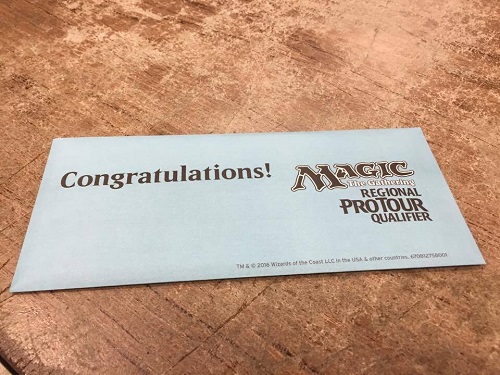
In seven rounds (including the Top 8 match) I played three mirrors, three Mardu Vehicles decks, and one G/B Aggro deck. These were of course the three matchups I was most prepared for and I can emphatically say that my preparation paid off to an absurd degree. I was certainly fortunate in various spots over the course of the tournament, but I wouldn’t have been in a position to get lucky without knowing the matchups well, having good sideboard plans, and playing some of the best technical Magic I’ve played in quite some time.
One of the trickiest parts of Magic is that the variance side is much more easily recognizable than the skill side. That is, watching someone curve out or draw the key removal spell on the right turn is readily apparent, whereas noticing when someone deftly plays around a counterspell or develops a better sideboard plan is much more opaque.
Moreover, this dichotomy is only exacerbated when you’re unprepared and thus unfamiliar with the format. After all, how are you going to notice when you sequence poorly if you don’t know what the proper sequencing for the matchup is?
That’s one of the reasons high-level players tend to play more slowly: they see more of the puzzle, more potential lines of play and counterplay than the average player, and analyzing all of those lines takes more time. I was definitely playing a little more slowly last weekend than I have recently.
Of course, you can’t expect to win every tournament, and we all have to accept that sometimes our hard work will go unrewarded. But it is immensely satisfying to have your back against the wall and come through. I don’t have a tournament this weekend, so I’m going to take a few days away from heavy testing, but my sights are already on qualifying for Pro Tour Hour of Devastation. With another guaranteed three Pro Points in Nashville and some solid GP finishes, I could Silver into it, but after paying for flights to Honolulu and Dublin, I really don’t want to shell out for one to Kyoto. If you didn’t know already, Japan is really far away from Virginia.
I’ll close with some Magic strategy, since I think Four-Color Saheeli is really sweet and #GPNJ is in a scant week and a half. To start, here’s the list I registered at the RPTQ, which I was happy with down to the last card:
Creatures (16)
Planeswalkers (8)
Lands (21)
Spells (15)

Brad Nelson is going to write a full primer on the deck later this week, so I’m not going to go into great detail here, instead focusing on the big-picture elements of the deck that are important to grasp in order to pilot it effectively.
I noted earlier that the deck plays out a lot like Splinter Twin did in Modern before it was banned. What I mean by that is the deck gains lots of advantages from false tempo, that is, by leveraging the fear of the combo rather than the combo itself. A turn 3 Saheeli Rai puts your opponent in the awkward position of needing to hold up mana for a removal spell or risk losing the game on the spot. If they choose to play it safe, then you can simply advance your position with one of your other threats until they are forced to react or fall hopelessly behind.
If they expend too much removal on your other threats, then you can go for the combo or simply grind them out. All of your creatures except Servant of the Conduit gain card advantage against removal spells, and you have several planeswalkers that provide cascading advantage as well. The result is a deck that can play proficiently in any style, aggro, control, or combo. Such versatility is quite powerful so long as you recognize which type of game you should be playing based on the matchup, your draw, and your opponent’s playstyle. Therein lies the difficulty in playing the deck.
Against green and black decks, for example, you’re generally playing a control-combo game. You want to be very conservative in the early game, killing creatures where possible and gaining some card advantage with your creatures and planeswalkers. Oath of Chandra is very important in this matchup because blinking it with Felidar Guardian increases your virtual removal count. However, their deck is powerful enough that you can’t give them too much time to draw back into the game. Walking Ballista not only stops the combo but is great at pressuring planeswalkers, and Verdurous Gearhulk can blank a lot of your removal and trump your creatures at the same time.
As a result, you should be looking to combo them in the mid-game once they have fallen behind and are forced to use their removal on your creatures or die. The most common way you win outside of the combo is by trading tons of resources and then casting a Whirler Virtuoso with enough energy to make three or four Thopters.
The Mardu Vehicles matchup plays out similarly, although you’re less concerned with comboing because their threats are less powerful and thus more easily contained. The exceptions are Heart of Kiran and Gideon, Ally of Zendikar, and you should take great pains to remove either from the battlefield or blunt their effectiveness. You also need to preserve your life total so you don’t die to a combination of Unlicensed Disintegrations and Shocks, so don’t be afraid to trade aggressively in the early-game, even with Scrapheap Scrounger. Your deck is more powerful than theirs and you just need time for that power to overwhelm them.
Against both archetypes, they are advantaged in the early-game and being too aggressive with the combo can put you in a deep hole. That said, if you have an opportunity to safely land a Saheeli Rai, you should take it, since false tempo is valuable regardless of the matchup. It’s just that those opportunities will be less available than in other matchups.
The mirror is the most complicated match you’ll have and I am still far from understanding its many nuances. The games can play out in many different ways depending on each player’s draw, what each player sideboards, and who is on the play.
The primary dynamic in Game 1 is the threat of the combo, which gives a huge advantage to the player playing first. A turn 3 Saheeli Rai must be answered by a threat with which to pressure it, often leaving the player on the draw simply hoping not to die on turn 4 in many of the games. But the reality is that trying to hold up a Harnessed Lightning is only going to make you fall further behind, so you’ll win more games overall by taking the risk.
If neither player can combo, then the game becomes a positioning war with planeswalkers playing the primary role. Pressuring planeswalkers is important, which makes Whirler Virtuoso the best creature and one you want to hold until you have a sizable store of energy so you’re guaranteed to make two or three Thopters with it.
The post-sideboard games play more toward the second style, since Authority of the Consuls provides each player peace of mind from the threat of the combo. Importantly, it also gives you an advantage in pressuring opposing planeswalkers, since your opponent’s creatures have to wait a turn to block and they can’t use Saheeli Rai’s -2 to create a surprise attacker.
Negate also gives the player on the draw the ability to answer a turn 3 Saheeli Rai as well as countering planeswalkers in general, so it’s a good tool to have. But it’s just that, a tool. And one among many that you have to use in concert with each other. There is no magic formula to winning or key cards to answer every time. Reps in this matchup are more important than anywhere else, especially since I expect the deck to pick up in popularity soon.
As a result of that popularity, control decks will become better-positioned, since they are typically favored against Four-Color Saheeli. They are quite good at answering the combo, so you have to focus on winning a fair game and wading through all their removal. Much like the mirror, you’ll want to save your Whirler Virtuosos until you have enough energy to make several Thopters, since those little fliers do a lot of work in the matchup. You want to get to a point where they are forced to answer them one-for-one with removal after nickel-and-diming their life total into single digits. Every point matters here since games are won by inches, so tight technical play is a must. Take every advantage you can and hope they add up to a victory.
We’re in the waning days of Aether Revolt Standard with few high-level events left before the release of Amonkhet, and now is a time where many players are set in their ways and are content to simply maintain the status quo and run out of the rest of the season. That predictable pattern gives you a easily predictable metagame to attack and this deck has the versatility to succeed against anything.
As for me, I’m pretty well settled in Roanoke by now, and I’m looking forward to pushing myself as far as I can go.


